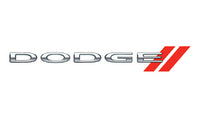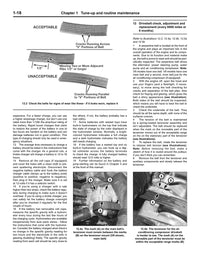Trying to work out why your car heater isn't working and why the car heater is blowing cold air when it should be hot? Read on to see what causes a car heater to blow cold air.
Depending on where you live, your car's heater can be the difference between comfort and discomfort, and even life and death. It's that important.
So, it makes sense to know how it works, and to find out how to fix it when it goes wrong.
How a car’s cooling system works
The cooling system on modern cars is fairly straightforward. A network of passages carry liquid antifreeze/coolant around the hotter parts of the engine. The coolant is forced around the passages by a water pump. A thermostat prevents the coolant from flowing until the motor gets warm enough. Rubber hoses carry the coolant from the motor to the radiator, and also to the heater core, which is basically a smaller radiator under the dashboard.
How a car heater core works
The radiator uses the outside air and a fan to cool the fluid in the system, while the heater core uses the heat from the coolant and a fan to warm the air inside the car.
For the cold engine to warm up quickly, it is fitted with a thermostat. When cold the thermostat restricts the flow of coolant to prevents it from entering the radiator. Once the engine is up to temperature the thermostat opens and the coolant flows around the whole system. The thermostat, and clutch or electrically controlled cooling fan work in conjunction to keep the water at the optimum temperature. This is why, once your car warms up, the temperature gauge should remain relatively static.
Why won’t my car warm up?
If the temperature gauge isn't moving much from the lowest reading, or the car runs poorly on a cold day, the cooling system may not be working properly. There are a few potential culprits for why your car engine coolant may not be heating up:
- Coolant Level - The first thing to check is the coolant level! If the coolant is low, there may be air in the system, which will lead to localized hot and cold spots. Typically the gauge needs to be in the coolant to read properly.
- Air Lock - If you have had a coolant leak, or have recently drained and filled the system, then you may have air lock. When this happens an air bubble gets trapped in the system preventing the engine coolant from circulating correctly.
- Gauge/Temp Sensor - Is the gauge actually working? Is it reading correctly? Modern cars have an electronic coolant temperature sensor connected to the OBDII computer which informs the temperature gauge. These sensors can fail. Often they will be flagged when you read the OBD fault codes.
- Thermostat - A faulty thermostat can cause too much or to little cooling. If it's stuck open, the engine is going to take longer to warm up because coolant will circulate all the time. You can remove the thermostat and test it in a pan of almost boiling water, it should open just before it reaches the boiling point, then close as the water cools. If doesn't move, then replace it!
Fixes: The only way to fix a faulty thermostat or temperature sender is to replace it. If the coolant is low, or there is an air lock (and also after replacing any faulty parts) you need to fill the system properly. To do this, set the heater controls in the car to maximum heat, remove the radiator cap (or remote mounted coolant pressure cap, sometimes on the overflow tank) and fill to the correct level. Now start the engine without replacing the cap and idle for a few minutes. Watch for the coolant level to drop as the thermostat opens.
Keep topped up to the max level with the engine running. Squeeze the top radiator hose to help air pump around the system (taking care to avoid any moving parts, in particular the radiator fan, which could come on suddenly without warning). Between the engine heat and the water pump, all the air should be forced from the system. Once full and warm, replace the cap and test drive.

Why is my car heater not working?
A car heater that isn't working could be caused by several simple issues. Either the blower isn't working, in which case you may get warm air but not much of it, or it is blowing air but it may not be very hot. Here is what to check if your heater or defroster isn't working:
- Coolant/Air lock - Did you top off the coolant as described above? Low coolant may prevent any from circulating through the heater core, as can an air bubble in the system. Make sure the system is full and free from air by filling it with the engine running and the heater controls set to maximum heat.
- Thermostat - If the thermostat is jammed open causing the car to overcool, there may not be sufficient heat in the coolant to provide hot air. Test, or replace the thermostat, as mentioned above, if you suspect this to be the cause.
- Heater Control Valve - When you set the heater temperature dial to hot, air being passed over the hot heater core should be ducted into the cabin. If it isn't, it could be because the heater control valve is not sending hot coolant to into the system. The heater control valve is typically not service able and is just replaced if faulty.
- Blend Door - On older cars and many simpler systems, a physical flap directs air from the heater core or outside into the ducts inside the car. This door can become stuck or disconnected from the control slider or knob. This part is typically serviceable, but not particularly easy to get to.
- Blockage - The heater core is made up of many very thin tubes of metal, and if it becomes blocked the coolant may circulate as normal around the engine, but not flow through the heater core. Typically you can't fully cure this problem once it gets really bad, but you can prevent it with periodic flushes of the cooling system about every 30,000 miles or two years.


























